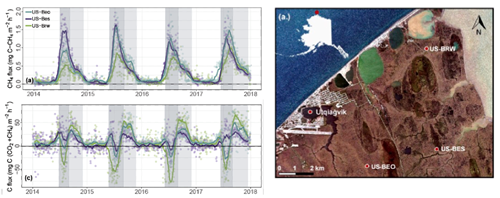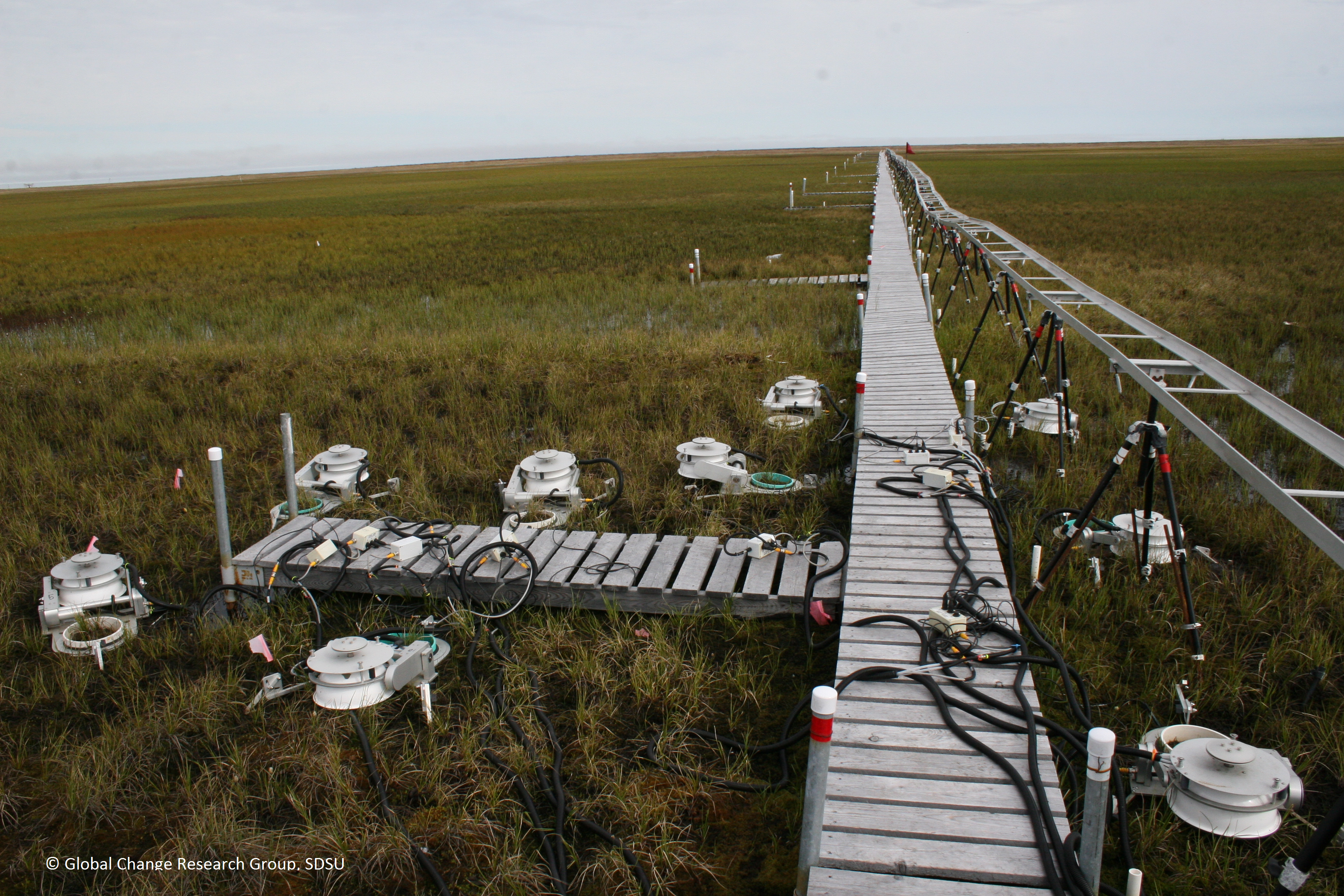A major challenge is to estimate the Arctic greenhouse gas (GHG) budget.
Challenges:
The Arctic and boreal land surface is home to a wide range of coupled processes with major feedbacks on the Earth System that have significant societal effects on the vulnerable economies of northern latitudes and Europe’s welfare. A major challenge is to estimate the Arctic greenhouse gas (GHG) budget. The current focus has been on measuring the two major carbon species CO2 and CH4 , however the existing network is still too sparse and most records are too short for differentiating inter-annual variability from long-term trends in GHG exchange processes. Therefore it is crucial to maintain and improve the station network to measure both CO2 and CH4 in key ecosystems and across all seasons.
Results obtained in INTAROS:
We identified the processes controlling CO2 and CH4 emissions during the fall period, discovered the occurrence of a later fall soil freezing during the last two decades which correlated with higher atmospheric CH4 concentration from terrestrial ecosystems in the Arctic. The studies have identified how soil freezing was associated with a sudden increase followed by a drop in soil CO2 concentration suggesting a peak emission to the atmosphere not captured by the ecosystem scale eddy covariance towers. The role of the spatial heterogeneity on CO2 and CH4 emission during the growing season and the fall period has been defined. Furthermore, the studies have identified how snowmelt and growing season length affected the carbon dynamics of tundra ecosystems. A microbial community active during the cold period has been identified. The development and application of a microbial-explicitly model (CLM-Microbe) has been advanced by improving the model representation of methanogens and methanotrophs in the Arctic. This work has resulted in >25 peer-reviewed manuscripts; supported the research of five PhD students, two master students, six undergraduate students, with considerable interaction with lead scientists in the field, and included the project results in large undergraduate courses.
The team has also been working closely with the Alaska Native Corporation Ukpeaġvik Iñupiat Corporation (UIC) to develop a variety of activities to share the knowledge acquired by this project, and a general knowledge of the effect of climate change on the Arctic with the community and native school children. We disseminated the research results also to the wider scientific community through several EGU sessions we organized in collaboration with scientists from several other institutions in the US and Europe.

Figures: Left: Carbon flux (daily average) of (a) CH4, (b) CO2 and (c) CO2 + CH4 (with CH4 expressed as CO2-eq based on warming potential) at the three EC sites. The darker shaded portion represents the growing season, while the lighter shaded portion represents the zero-curtain period. Right: Location of the three EC towers in Barrow, Alaska. Copyright: Hashemi et al., 2021.
References:
Arndt et al., (2019a, 2019b, 2020)
Hashemi et al., (2021)
12-10-2021
